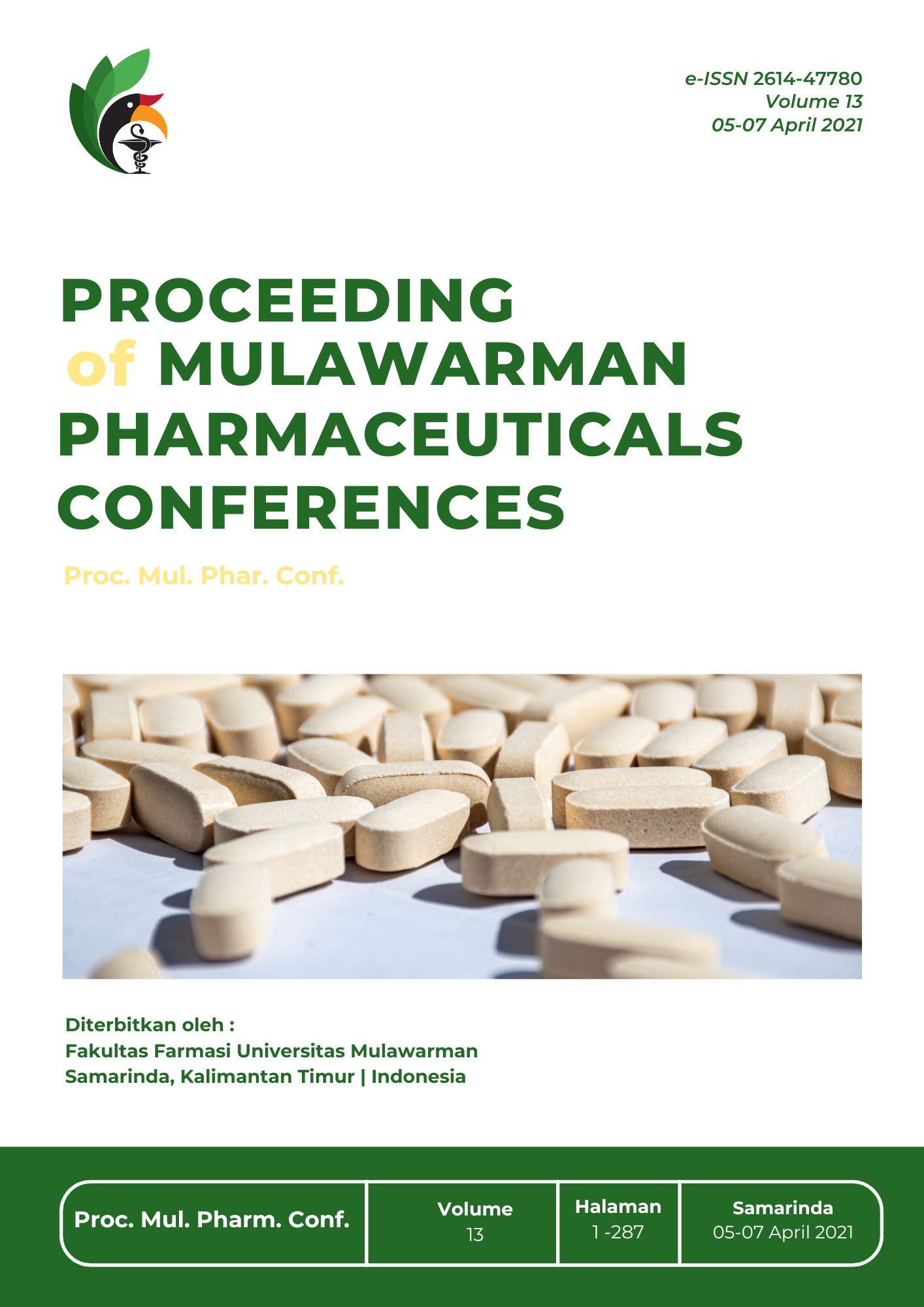Antibacterial Activities of Lintut Leaves (Hemigraphis sp) Extract Against Escherichia coli, Staphylococcus aureus, Staphylococcus epidermidis, and Salmonella typhi Bacteria?s
DOI:
https://doi.org/10.30872/mpc.v13i.274Keywords:
Antibacterial, Lintut Leaves, Eschericia coli, Staphylococcus aureus, Staphylococcus epidermidis and Salmonella typhiAbstract
Lintut plants are herbaceous plants that can grow in soft or watery soil. Research on leaf extracts against Escherichia coli, Staphylococcus aureus, Staphylococcus epidermidis and Salmonella typhi has never been done. This study aims to determine the antibacterial activity of leaf extract against Escherichia coli, Staphylococcus aureus, Staphylococcus epidermidis and Salmonella typhi. The research stages began with the manufacture of simplicia, the manufacture of ethanol extract of lintut leaves, the ethanol extract phytochemical screening test, and the antibacterial activity test using the well diffusion method. The study was conducted using 3 groups of concentrations of lintut leaf extract, namely 7%, 9% and 10% with ampicillin 0.1% as a positive control and aquadest as a negative control. The results of the phytochemical screening test showed that the leaf extract positively contained triterpenoids / steroids and tannins. Antibacterial activity using the well diffusion method showed that the extracts of lintut leaves with a concentration of 7%, 9% and 10% were not significantly different. The best concentration in inhibiting the growth of Escherichia coli, Staphylococcus aureus, Staphylococcus epidermidis and Salmonella typhi was at a concentration of 7%. The positive control used, namely ampicillin, produced a larger diameter of the inhibition zone compared to the diameter of the extract inhibition zone.
References
Hariana, Arief. 2004. Tumbuhan Obat Dan Khasiatnya . Jakarta :Niaga Swadaya.
Gibson, J. M. 1996. Mikrobiologi dan Patologi Modern Untuk Perawat . Jakarta : EGC.
Rahmawatiani, Ayu., Dewi Mayasari., dan Angga Cipta Narsa. 2020. Kajian Literatur: Aktivitas Antibakteri Ekstrak Herba Suruhan (Peperomia pellucida L.). Proceeding of Mulawarman Pharmaceuticals Conferences.
Ngajow, Mercy., Jemmy Abidjulu., dan Vanda S. Kamu. 2013. Pengaruh Antibakteri Ekstrak Kulit Batang Matoa (Pometia pinnata) Terhadap Bakteri Staphylococcus aureus Secara In Vitro. Jurnal MIPA Unsrat Online, Vol.02 No.02.
Ibrahim, Arsyik dan Hadi Kuncoro. 2012. Identifikasi Metabolit Sekunder dan Aktivitas Antibakteri Ekstrak Daun Sungkai (Peronema canescens Jack) Terhadap Beberapa Bakteri Patogen. Journal of Tropical Pharmacy and Chemistry, Vol 2. No. 1.
Ramadhan, Adam., Ririn Pangaribuan., dan Arsyik Ibrahim. 2015. Metabolit Sekunder dan Aktivitas Fraksi Etil Asetat Kulit Buah Jengkol (Pithecellobium jiringa (Jack) Prain.) Terhadap Bakteri Pseudomonas aeruginosa dan Bacillus subtilis. Journal of Tropical Pharmacy and Chemistry, Vol 3. No. 2.
Hardika, Pindo., Aditya Fridayanti., dan Laode Rijai. 2013. Aktivitas Antibakteri Ekstrak Daun Kecapi (Sandoricum koetjape Merr.). Journal of Tropical Pharmacy and Chemistry, Vol 2. No. 3.
Kurniawati Evi. 2015. Daya Antibakteri Ekstrak Tunas Bambu Apus Terhadap Bakteri Staphylococcus aureus dan Escherichia coli Secara In Vitro. Jurnal Wiyata, Vol. 02, No. 02.
Downloads
Published
Issue
Section
License
Copyright (c) 2021 Deva Ayudhia Septiani, Wisnu Cahyo Prabowo, Rolan Rusli (Author)

This work is licensed under a Creative Commons Attribution-NonCommercial 4.0 International License.


